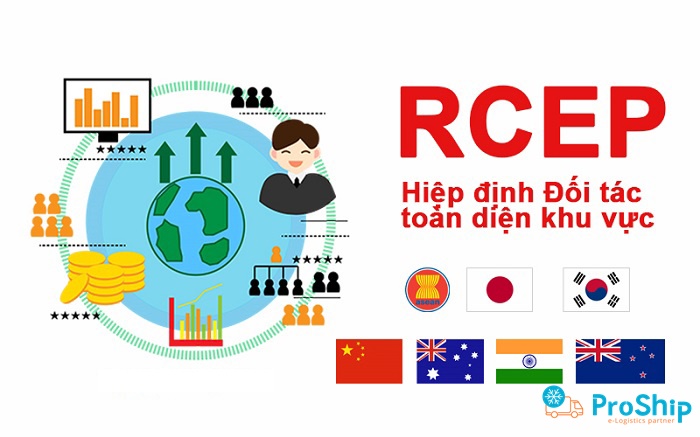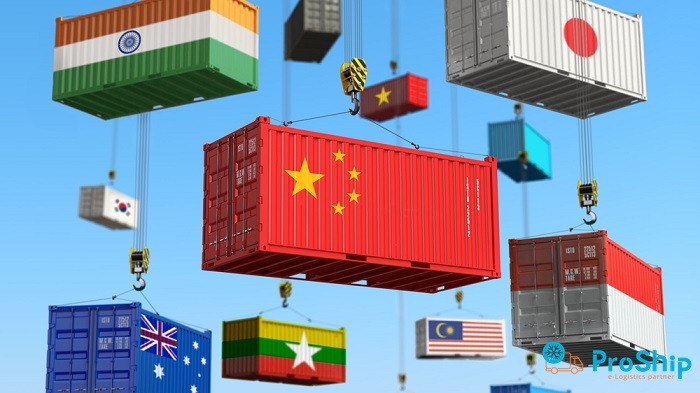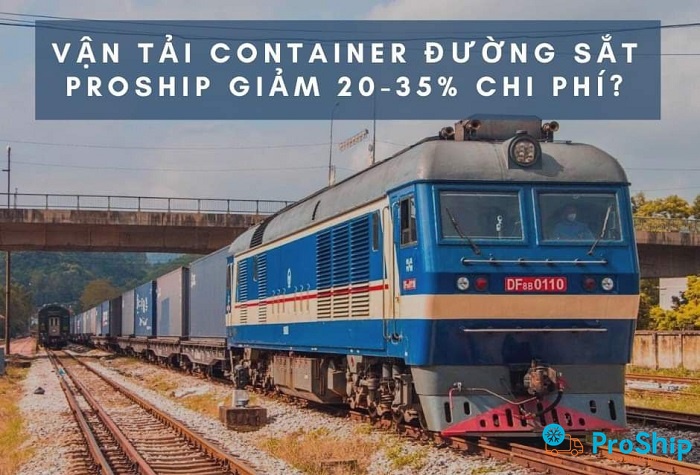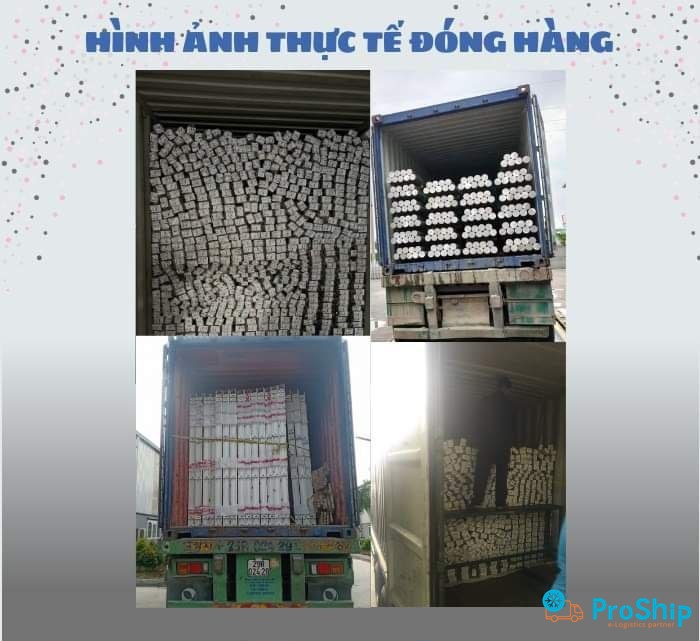x Bạn đang làm trong lĩnh vực XNK, Vận tải hàng hóa, thương mại,…cần tìm hiểu về Hiệp định RCEP?
x Bạn muốn biết nội dung Hiệp định RCEP là gì? Giải pháp nào cho các DN Việt Nam khi ký kết RCEP?
x Bạn muốn tìm một đơn vị xuất nhập khẩu hàng hóa bằng container đường sắt giá rẻ, an toàn, tận tâm?
Proship.vn chúng tôi chính là một trong những đơn vị chuyên kinh doanh trong Ngành vận tải, logistics, xuất nhập khẩu hàng hóa bằng container đường sắt, đường biển,…uy tín, giá tốt nhất, an toàn nhất, chuyên nghiệp nhất với việc vận dụng hiệu quả Hiệp định RCEP. Thông qua bài chia sẻ này, Proship cũng cập nhật thông tin cần biết về Hiệp định RCEP cùng các giải pháp hữu hiệu cho các Doanh nghiệp tại thị trường Việt Nam hiện nay.
📦 Hotline Liên Hệ Vận Chuyển
🧭 Miền Trung
Hiệp định RCEP là gì?
Hiệp định RCEP là một Hiệp định thương mại tự do giữa các quốc gia thành viên của ASEAN với 6 đối tác đã có FTA với ASEAN, bắt đầu đàm phán từ ngày 9/5/2013. (Theo Association of Southeast Asian Nations – ASEAN). RCEP có tên Tiếng Anh là Regional Comprehensive Economic Partnership, viết tắt là RCEP. RCEP hay Hiệp định Đối tác Kinh tế Toàn diện Khu vực.
Theo hiệp định này thời gian cụ thể vào 08/2012, theo đó tại hiệp định có 16 Bộ trưởng Kinh tế các nước RCEP đã công bố bản Hướng dẫn Quy tắc và Mục tiêu đàm phán của Hiệp định Đối tác Kinh tế Toàn diện Khu vực (RCEP), với sự tham gia của 10 nước thành viên ASEAN (Brunei, Campuchia, Indonesia, Lào, Malaysia, Myanmar, Philippines, Singapore, Thái Lan và Việt Nam), và 06 đối tác FTA của ASEAN (Úc, Trung Quốc, Ấn Độ, Nhật Bản, Hàn Quốc, và New Zealand).
Nội dung hiệp định RCEP gồm: Thương mại hàng hóa, thương mại dịch vụ, đầu tư, hợp tác kinh tế – kĩ thuật, sở hữu trí tuệ, cạnh tranh, giải quyết tranh chấp, thương mại điện tử, doanh nghiệp vừa và nhỏ, và các vấn đề khác. Bên cạnh thực hiện nội dung với mục tiêu đàm phán của hiệp định RCEP cụ thể là sẽ đạt được một thỏa thuận hợp tác kinh tế tân tiến, toàn diện, có chất lượng cao và đem lại lợi ích cho các bên tham gia. Vòng đàm phán RCEP chính thức được bắt đầu vào đầu năm 2013.

Hiệp định RCEP được khởi động đàm phán vào năm 2013, đến nay đã có 25 phiên đàm phán chính thức. Trong cuộc đàm phán vào tháng 11/2018, các nhà Lãnh đạo Cấp cao cho rằng cuộc đàm phán RCEP năm 2018 đã đạt được tiến bộ đáng kể, hướng tới giai đoạn đàm phán cuối cùng, các bên tiếp tục quá trình đàm phán để kết thúc đàm phán trong năm 2019 với một Hiệp định RCEP tiến bộ, toàn diện, chất lượng cao và mang lại lợi ích cho tất cả các bên tham gia.
Về mức độ kì vọng, Hiệp định RCEP được cho là sẽ có mức độ cam kết sâu rộng hơn với những tiến bộ đáng kể hơn so với các FTA ASEAN+ hiện hành, trong khi ghi nhận sự phát triển khác nhau của các bên tham gia (Theo Phòng Thương mại và Công nghiệp Việt Nam, Trung tâm WTO VCCI).
Nội dung quy định của hiệp định RCEP như thế nào?
Hiệp định RCEP với 20 chương, gồm các lĩnh vực và nguyên tắc chưa từng có trong các Hiệp định thương mại tự do trước đây giữa ASEAN và các nước đối tác. Bên cạnh các điều khoản thương mại hàng hóa, dịch vụ và đầu tư, RCEP gồm những chương về sở hữu trí tuệ, thương mại điện tử, cạnh tranh, Doanh nghiệp nhỏ và vừa (SMEs) hay mua sắm của Chính phủ, được xem là những điều khoản tiến bộ và cập nhật hiện nay:
- Chương Điều khoản ban đầu khẳng định mục tiêu của Hiệp định RCEP là thiết lập khung khổ đối tác kinh tế hiện đại, tự do, toàn diện, chất lượng cao và đem lại lợi ích cho tất cả các bên nhằm tạo điều kiện thuận lợi cho việc mở rộng thương mại và đầu tư trong khu vực và đóng góp vào tăng trưởng và phát triển kinh tế toàn cầu.
- Chương 2 (Thương mại hàng hóa) bao gồm các quy định và cam kết cụ thể về tự do hóa thương mại hàng hóa. Ngoài các nghĩa vụ đối xử quốc gia, phí và phụ phí, loại bỏ các hạn chế định lượng đối với xuất nhập khẩu, hàng hóa quá cảnh,…được thực hiện theo quy định của Hiệp định chung về Thuế và Thương mại của WTO (GATT), Chương 2 quy định về thực hiện lộ trình tự do hóa thuế quan của các bên đính kèm tại Phụ lục I của Hiệp định.
- Chương 3 (Quy tắc xuất xứ) Theo quy tắc xuất xứ của Hiệp định RCEP, hàng hóa được coi là có xuất xứ nếu đáp ứng một trong ba trường hợp sau: (i) hàng hóa có xuất xứ thuần túy tại một nước thành viên; (ii) hàng hóa được sản xuất chỉ từ nguyên liệu có xuất xứ từ một hay nhiều nước thành viên; (iii) hàng hóa sử dụng nguyên liệu không có xuất xứ nhưng đáp ứng quy định tại Quy tắc cụ thể mặt hàng.
- Chương 4 (Thủ tục hải quan và thuận lợi hóa thương mại) gồm các quy định về đơn giản hóa và minh bạch hóa thủ tục hải quan, hài hòa các thủ tục hải quan với các tiêu chuẩn quốc tế nhằm đảm bảo tính dễ dự đoán và nhất quán trong việc áp dụng các luật và quy định hải quan, đồng thời thúc đẩy quản lý hiệu quả các thủ tục hải quan và thông quan hàng hóa nhanh chóng, tạo thuận lợi cho doanh nghiệp.
- Chương 5 (Các biện pháp vệ sinh an toàn thực phẩm và kiểm dịch động thực vật) về cơ bản tuân thủ các nguyên tắc của Hiệp định SPS của WTO, đồng thời xác định rõ vai trò quan trọng của tính minh bạch, cơ sở khoa học trong việc xây dựng và áp dụng các biện pháp SPS của các bên, vấn đề hợp tác và nâng cao năng lực và cơ chế tham vấn kỹ thuật nhằm giải quyết các vướng mắc về SPS để thúc đẩy thương mại nông sản thực phẩm giữa các bên đối tác trong RCEP.
- Chương 7 (Phòng vệ thương mại) quy định áp dụng các biện pháp: chống bán phá giá, chống trợ cấp, biện pháp tự vệ toàn cầu, biện pháp tự vệ chuyển tiếp trong phạm vi các thành viên Hiệp định RCEP áp dụng trong giai đoạn chuyển tiếp.
- Chương 8 (Thương mại dịch vụ) được xây dựng đồng thời theo hai phương thức tiếp cận chọn – cho và chọn – bỏ, tùy các nước lựa chọn cách đưa ra biểu cam kết, với các nghĩa vụ hiện diện địa phương, hội đồng quản trị, yêu cầu về hoạt động (chỉ áp dụng đối với các nước theo phương thức chọn – bỏ), đồng thời vẫn có các nghĩa vụ đối xử tối huệ quốc và đối xử quốc gia.
- Chương 9 (Di chuyển thể nhân) đưa ra các cam kết tạo điều kiện thuận lợi cho việc di chuyển và lưu trú tạm thời của các thể nhân tham gia vào các hoạt động thương mại hàng hóa, dịch vụ và đầu tư, giới hạn ở 2 loại hình thể nhân là khách kinh doanh và người di chuyển trong nội bộ doanh nghiệp.
- Chương 10 (Đầu tư) Hiệp định RCEP gồm đủ 4 yếu tố của một hiệp định đầu tư, gồm tự do hóa, xúc tiến, tạo thuận lợi cho đầu tư và bảo hộ đầu tư. Chương Đầu tư bao gồm các cam kết về đối xử đầu tư, đối xử quốc gia, đối xử tối huệ quốc (MFN), yêu cầu thực hiện (PPR), quản lý cấp cao và hội đồng quản trị (SMBD), chuyển tiền, tước quyền sở hữu…

- Chương 11 (Sở hữu trí tuệ) gồm các cam kết về hài hòa hóa về mức độ bảo hộ và thực thi các quyền sở hữu trí tuệ, xây dựng trên cơ sở quy định Hiệp định về những khía cạnh liên quan đến thương mại của quyền sở hữu trí tuệ (TRIPS) WTO
- Chương 12 (Thương mại điện tử) Nội dung thương mại điện tử trong Hiệp định RCEP chỉ gồm các cam kết về hợp tác, khuyến khích các nước thành viên cải thiện quy trình và quản lý thương mại bằng cách tạo môi trường thúc đẩy sử dụng các phương tiện điện tử.
- Chương 13 (Cạnh tranh) bao gồm nghĩa vụ: thông qua hoặc duy trì các luật và quy định nhằm ngăn cấm các hoạt động chống cạnh tranh và thiết lập hoặc duy trì các cơ quan có thẩm quyền để thực thi luật cạnh tranh của mình; công nhận quyền chủ quyền của nhau trong việc xây dựng và thực thi luật cạnh tranh và chính sách của mình….
- Chương 14 (Doanh nghiệp vừa và nhỏ) yêu cầu các nước thành viên thúc đẩy việc chia sẻ thông tin về Hiệp định RCEP liên quan đến doanh nghiệp vừa và nhỏ, bao gồm toàn văn của Hiệp định, các luật và quy định liên quan đến thương mại và đầu tư và các thông tin liên quan đến kinh doanh hữu ích khác nhằm tăng khả năng tận dụng và hưởng lợi của các doanh nghiệp vừa và nhỏ từ các cơ hội do Hiệp định RCEP tạo ra.
- Chương 15 (Hợp tác kinh tế và kỹ thuật) Theo đó, các nước sẽ tìm hiểu và thực hiện các hoạt động hợp tác kinh tế và kỹ thuật tập trung vào các lĩnh vực như thương mại hàng hóa, thương mại dịch vụ, đầu tư, sở hữu trí tuệ, thương mại điện tử, cạnh tranh, doanh nghiệp vừa và nhỏ và các vấn đề khác theo thỏa thuận giữa các nước.
- Chương 16 (Mua sắm của Chính phủ) có mức độ cam kết thấp hơn nhiều so với Hiệp định CPTPP và EVFTA, chỉ gồm các nghĩa vụ tăng cường tính minh bạch, hợp tác và trao đổi thông tin giữa các bên về chính sách mua sắm công và không bao gồm cam kết mở cửa thị trường. Đồng thời, cơ chế giải quyết tranh chấp trong Hiệp định RCEP không áp dụng đối với Chương Mua sắm của Chính phủ.
- Chương 17 (Các điều khoản chung và ngoại lệ) quy định về loại trừ chung, loại trừ an ninh, các biện pháp về thuế. Hiệp định RCEP cho phép các nước thành viên áp dụng các biện pháp cần thiết nhằm bảo vệ an ninh quốc gia, an toàn lãnh thổ, trật tự, an toàn xã hội, bảo vệ sức khoẻ của con nguời, động vật, môi trường, đạo đức xã hội, bảo đảm cán cân thanh toán,…tương tự như quy định của WTO. Đối với các biện pháp về thuế, Hiệp định RCEP không điều chỉnh các cam kết về thuế nội địa trừ trường hợp thực hiện theo quy định của WTO.
- Chương 18 (Các điều khoản thể chế) quy định về việc thiết lập bộ máy và thể chế giám sát thực hiện Hiệp định RCEP, bao gồm Ủy ban Thực thi Hiệp định RCEP, Ủy ban về Hàng hóa; Dịch vụ và Đầu tư; Tăng trưởng hay Phát triển bền vững; và Môi trường Kinh doanh, và các cơ quan trực thuộc khác do Ủy ban Thực thi Hiệp định RCEP thành lập. Ủy ban Thực thi Hiệp định RCEP sẽ báo cáo với các Bộ trưởng RCEP và có thể đưa các vấn đề lên các Bộ trưởng RCEP để xem xét và quyết định.
- Chương 19 (Giải quyết tranh chấp) gồm các quy định nhằm xây dựng một quy trình minh bạch và hiệu quả cho việc tham vấn và giải quyết tranh chấp giữa các thành viên phát sinh trong quá trình thực hiện Hiệp định RCEP.
- Chương 20 (Điều khoản cuối cùng) gồm các điều khoản quy định về các thủ tục chung như mối liên hệ của Hiệp định RCEP với các hiệp định khác, điều khoản gia nhập, cơ chế rà soát, điều chỉnh và hiệu lực của Hiệp định. Sau khi ký, các nước sẽ phải hoàn thành các thủ tục trong nước để đưa Hiệp định vào thực hiện và phải thông báo cho các bên khác.
📦 Hotline Liên Hệ Vận Chuyển
🧭 Miền Trung
Giải pháp cho Doanh nghiệp Việt Nam tận dụng các lợi ích khi Hiệp định RCEP được ký kết
Để có thể tận dụng những lợi ích RCEP đem lại, các Doanh nghiệp Việt Nam cần tập trung vào các giải pháp như:
- Một là, sự phối hợp hiệu quả giữa Nhà nước và Doanh nghiệp là điều kiện then chốt để tận dụng tối đa những lợi ích của RCEP phục vụ cho công cuộc xây dựng và phát triển đất nước trong thời gian tới;
- Hai là, các doanh nghiệp cần tập trung tăng cường năng lực cạnh tranh, khắc phục những điểm yếu về tính không chuyên nghiệp, không đồng đều về mặt chất lượng, quy trình sản xuất…Trong đó, tập trung đầu tư vào công nghệ, phát triển các sản phẩm chiến lược phù hợp, đồng thời tận dụng hợp tác phát triển với các nước thành viên trong RCEP;
- Ba là, chú trọng tận dụng hiệu quả lợi ích của Chứng nhận xuất xứ (C/O) trong xuất khẩu hàng hóa, đặc biệt là xuất sang các thị trường khó tính như Nhật Bản, Hàn Quốc, Australia, New Zealand và Trung Quốc;
- Bốn là, cần tìm hiểu thông tin về những lợi ích và thách thức doanh nghiệp có thể gặp phải khi tham gia vào Hiệp định. Khi đó, các doanh nghiệp sẽ chủ động hơn trong hoạt động sản xuất kinh doanh, tạo ra được các sản phẩm có chất lượng cao với chi phí hợp lý có thể cạnh tranh với các mặt hàng tương đồng của các nước trong RCEP.
>>Xem thêm: ETA là gì?
Proship.vn nhận xuất nhập khẩu hàng hóa Việt Nam đi các nước bằng đường sắt Liên vận Quốc tế Giá rẻ, An toàn, Chuyên nghiệp
Việt Nam có thể là một trong những quốc gia nhận nhiều lợi ích từ RCEP khi có các mặt hàng thế mạnh như nông, thuỷ sản đáp ứng nhu cầu hầu hết thành viên. Và hiện nay, nhu cầu chuyển gửi hàng hóa đi Quốc tế của các cá nhân, Doanh nghiệp rất lớn, kéo theo rất nhiều Công ty vận chuyển hàng quốc tế ra đời. Để đáp ứng nhu cầu đa dạng từ thị trường, PROSHIP.VN cung cấp Dịch vụ gửi hàng Việt Nam – Quốc tế với cước phí tiết kiệm, nâng cao năng lực vận tải, rút ngắn thời gian vận chuyển, gia tăng tiện ích cho chủ hàng nhằm mang lại gói dịch vụ chất lượng tốt nhất, hoàn hảo nhất.
Trong suốt quá trình vận chuyển lô hàng, đội ngũ nhân viên chuyên nghiệp, giàu kinh nghiệm của Proship sẽ liên tục theo dõi và cập nhật tình hình cho khách. Đơn vị cam kết làm việc với tinh thần và trách nhiệm cao nhất, luôn đặt lợi ích khách hàng lên hàng đầu. Để phục vụ nhu cầu của khách hàng, Proship cung cấp Container 20 feet, Container 45 feet, Container 40 feet nóng, lạnh; Container 45 feet nóng lạnh…Các thùng Container chứa hàng được sản xuất theo công nghệ mới nhất, xử lý lớp cách nhiệt khoa học, cấu tạo được làm bằng chất liệu tốt.
Proship cũng nhận hỗ trợ các Dịch vụ Logistics liên quan như Dịch vụ XNK ủy thác, Dịch vụ kho bãi,…Chúng tôi luôn có sự kết nối chặt chẽ với các đơn vị liên quan, cơ sở hạ tầng, phương tiện đầy đủ, nhân lực hùng hậu giàu kinh nghiệm,…giúp kế hoạch vận chuyển hàng hóa bằng container đường sắt Liên vận Quốc tế diễn ra thành công tốt đẹp. Tại đây, Bảng giá xuất nhập khẩu hàng hóa bằng đường sắt Ga – Ga được niêm yết công khai và mức giá đưa ra là trọn gói, không phát sinh bất cứ khoản phí nào khác gây khó khăn cho công việc của bạn.


Các tỉnh thành Proship nhận hàng hóa chuyển Việt Nam – Quốc tế
An Giang, Bà Rịa – Vũng Tàu, Bắc Giang, Bắc Kạn, Bạc Liêu, Bắc Ninh, Bến Tre, Bình Định, Bình Dương, Bình Phước, Bình Thuận, Cà Mau, Cao Bằng, Đắk Lắk, Đắk Nông, Điện Biên, Đồng Nai, Đồng Tháp, Gia Lai, Hà Giang, Hà Nam, Hà Tĩnh, Hải Dương, Hậu Giang, Hòa Bình, Hưng Yên, Khánh Hòa, Kiên Giang, Kon Tum, Lai Châu, Lâm Đồng, Lạng Sơn, Lào Cai, Long An, Nam Định, Nghệ An, Ninh Bình, Ninh Thuận, Phú Thọ, Quảng Bình, Quảng Nam, Quảng Ngãi, Quảng Ninh, Quảng Trị, Sóc Trăng, Sơn La, Tây Ninh, Thái Bình, Thái Nguyên, Thanh Hóa, Thừa Thiên Huế, Tiền Giang, Trà Vinh, Tuyên Quang, Vĩnh Long, Vĩnh Phúc, Yên Bái, Phú Yên, Cần Thơ, Đà Nẵng, Hải Phòng, Hà Nội, TP.Hồ Chí Minh.
Các mặt hàng Proship nhận và không nhận xuất nhập khẩu Việt Nam – Quốc tế
* Hàng hóa nhận gửi đi Quốc tế:
- Hàng gia dụng: quần áo, giày dép, xoong, nồi,…;
- Hàng điện tử: tivi, máy giặt, đồng hồ, máy tính;
- Hàng lương thực, thực phẩm khô: gạo, bánh trái, đồ khô, tôm khô, mực khô, bánh tráng…;
- Hồ sơ du học, giấy tờ nhà, giấy tờ cá nhân, hồ sơ định cư,…đi Châu Âu;
- Hàng mỹ phẩm: sữa tắm, dầu gội, kem dưỡng da, sửa rửa mặt,..;
- Hàng thủ công mỹ nghệ: đồ gốm, sành sứ, thủy tinh, gỗ, đá, thạch cao,…
* Hàng hóa không nhận gửi đi Quốc tế:
- Các thực phẩm có mùi: các loại mắm, sầu riêng,…;
- Các thực phẩm sống: thịt gà, thịt vịt, thịt heo, thịt bò,…;
- Các thực phẩm được làm khô nhưng từ động vật sống trên cạn, có thể gửi cá khô nhưng không thể gửi bò khô, gà khô, nai khô,…;
- Các mặt hàng khác như thuốc lá, thuốc tây, súng, dao, kiếm, thú cưng,…
Cách thức nhận và giao hàng hóa Việt Nam đi Quốc tế
- Vận chuyển hàng hóa bằng Container từ Ga tới Ga;
- Vận chuyển Container từ Ga tới Kho;
- Vận chuyển hàng Container từ Kho tới Kho;
- Các dịch vụ đi kèm khác nếu khách hàng yêu cầu.
Các dịch vụ vận tải hỗ trợ đi kèm
- Hỗ trợ đóng gói, đóng kiện hàng;
- Miễn phí lưu kho (nếu thời gian lưu trữ hàng không quá dài ngày);
- Hỗ trợ bốc xếp hàng hóa tại kho bãi.
Quy trình các bước gửi hàng hóa đi Quốc tế từ Hà Nội, TPHCM, Đà Nẵng của Proship
- Bước 1: Proship nhận yêu cầu khách cần chuyển gửi hàng đi Quốc tế từ Đà Nẵng/TPHCM/Hà Nội, liên hệ 0909 344 247;
- Bước 2: Sau khi tiếp nhận yêu cầu vận chuyển, nhân viên sẽ tiến hành khảo sát và ước lượng chi phí dịch vụ cho khách. Nếu nhận thấy chi phí Dịch vụ vận chuyển hàng hóa đi Quốc tế cạnh tranh hợp lý, quý khách báo lại với đơn vị và cung cấp đầy đủ các thông tin cần thiết (loại hàng, số lượng, khối lượng, địa điểm giao nhận,…);
- Bước 3: Đến thời gian theo yêu cầu, nhân viên đơn vị cùng xe Container chuyên dụng đến tận địa chỉ khách yêu cầu để nhận hàng. Hàng hóa sau đó được chuyển đi bằng đường sắt đến địa chỉ nhận hàng ở ga tàu các nước;
- Bước 4: Proship thực hiện giao hàng tận nơi cho người nhận. Người nhận cần kiểm tra nguồn hàng hóa trong Container vừa xuất khẩu sang, thanh toán và kết thúc hợp đồng.
*** PROSHIP đang nhận được sự tín nhiệm của hàng trăm khách hàng, Doanh nghiệp Trong nước và Quốc tế. Chúng tôi sẽ không ngừng cải thiện chất lượng Dịch vụ chuyển hàng hóa bằng đường sắt đi Quốc tế vì sự hài lòng của Quý khách hàng.
Proship đã cập nhật những kiến thức cần biết về Hiệp định RCEP là gì , nội dung liên quan tới RCEP cũng như giải pháp hiệu quả cho các Doanh nghiệp Việt Nam tận dụng lợi ích khi ký kết Hiệp định RCEP. Bạn đọc quan tâm muốn tìm hiểu vấn đề này nên tham khảo qua để có sự chủ động trong các hoạt động liên quan tới xuất nhập khẩu hàng hóa. Hãy tiếp tục theo dõi và đồng hành cùng chúng tôi để cập nhật các thông tin hữu ích, không chỉ là RCEP là gì mà còn là kiến thức căn bản khác về Vận tải, Logistics, xuất nhập khẩu hàng hóa,…
